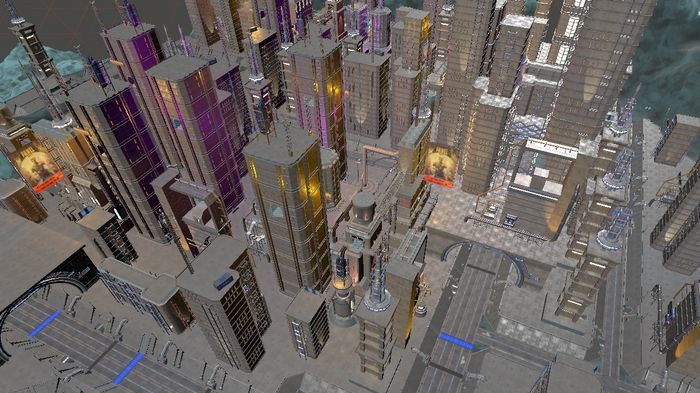
Making a game takes a lot of love and sweat.
As an indie dev, deadlines and crunches sometimes prevent us from taking a step back from tasks. So, we thought we’d sit down with team members and have them share their experience on making LTR, from a more personal perspective.
Tell us about your beginning as an artist.
My mother was a painter, and my father, a photographer. Surrounded by artists from the very beginning, it was only natural for me to create, and tell stories.
I was an avid reader of literature, and among my absolute references, there are, Jules Verne, Lovecraft. I also grew up loving comics culture, the old school SF genre by Moebius, or Jodorowsky. Besides, I have always been a cinephile.
I started playing games when I was 10, and as a gamer, it was a natural path for me to join the video game industry, it was one of the great ways to tell stories and pay tribute to those whom admired so much.
What was the starting point for the concept art?
I’m really lucky as LTR is an IP the studio is creating. It means we get all the creative freedom. We have a great team, and an artistic universe we all love and feel a strong connection to.
What drove your artistic choice?
If we look at sci-fi games, (which, by the way, I like playing) such as Halo, Mass Effect, Star Citizen, the artistic take is oriented hard sci-fi. The look and feel are very squarish, angular, and pretty similar to all other games in the same genre, echoing a whole generation of fans and artists. Although I love playing the cited games, as an artist in charge of the concept of LTR, I wanted to suggest a different vision.
The sci-fi I cherish is more “humane”, organic. It’s faulty, full of imperfections, take the city in “the 5th element”, or the planets from the “Valerian & Laureline” comic book. My inspiration comes from those.
What does your job entail to?
It’s quite broad, I’m a jack of all trades. I manage resources. To go into more details, at the moment, I’m creating the ship rig and I’m working on the 3D animation. I’ll also do the post fx which I love by the way (Lighting, compositing…) on the current game level.
I’m also a 3D artist, doing 3D modelization of surfaces and environment.
Tell us about your biggest challenge on Light Trail Rush
Art production requires a lot of resources. The fact that we’re a small team causes us to compromise. For instance, the game will feature one environment for its final release version whereas we have so many ideas for more. It’s sometimes frustrating to cut out what I feel like great ideas. It’s limiting.
Also, the fact that we chose to work on a procedurally generated environment, it requires of us more focus on the technical side: ie: optimization.
In a procedural generation, we can’t bake the lights as much as we wanted, the dev team created a script to calculate the distance from the object (which keeps moving) and switch between baked & real-time lighting.
We have to adapt all the tools and process for LTR as there are no cheats, we need to find new ways. We’ve to think outside the box, which makes the whole production exciting.
What your biggest dream as an artist?
I want to challenge myself into creating something that nobody has yet done in the highest standard. Let me explain: in my opinion, nobody’s succeeded in translating the “Cosmic horror” notion, which was first created and described by Lovecraft in his books. It’s utterly fascinating as it’s very different from the standard horror genre.
The feeling of sickening anxiety and powerlessness will linger in you even long after you’d put down the book.
I would love to challenge myself and transpose that sickening feel to a video game.
Tell us a secret about yourself that your team members don’t know
One of my dreams was to make swords, knives from the Viking and the medieval period. I was about to start training to become a blacksmith. But when I landed the job B2Expand, I had the chance to have another go as an artist and gladly took it.
Still, I might own a forgery one day, who knows?



